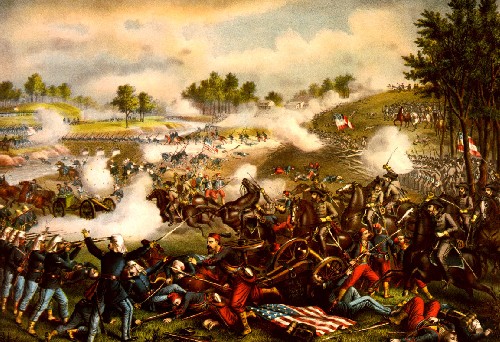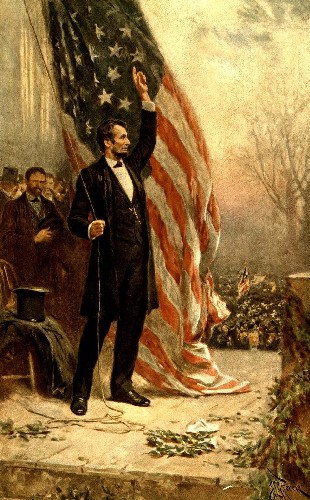
Although kind and well-liked,
Warren Harding is often ranked as the worst president in American history and he even admitted that the job was beyond him.
Some observers say that his "claim to infamy rests on spectacular ineptitude captured in his own pathetic words: I am not fit for this office and should never have been here.'" Aware of his limitations, Harding appointed some highly intelligent and capable men to his
cabinet, including Charles Evans Hughes as Secretary of State and
Herbert Hoover as Secretary of Commerce.
Unfortunately, Harding also surrounded himself with an "unpleasant group of dishonest cheats," who came to be known as the Ohio Gang. According to historians at the
Miller Center:
Warren’s close friend and political manager, Harry Daugherty, whom he named attorney general, was one of the worst - and one of the slickest. He survived impeachment attempts by Congress and two indictments for defrauding the government in the disposal of alien property confiscated from German nationals. Another schemer, Albert Fall, Secretary of the Interior, secretly allowed private oil companies to tap the Teapot Dome oil reserve in Wyoming and the Elk Hills oil reserve in California in return for $300,000 paid to him in bribes. Whether Harding was aware of his advisors' crimes beforehand is uncertain. What is certain, however, is that he played card games and drank whiskey with his advisors upstairs at the White House in private defiance of
Prohibition.
Describing the scene at one of Harding's card games that she encountered, Alice Roosevelt, daughter of Teddy Roosevelt, wrote: "the air heavy with tobacco smoke, trays with bottles containing every imaginable brand of whiskey, cards and poker chips ready at hand – a general atmosphere of waistcoat unbuttoned, feet on the desk, and spittoons alongside."
Meanwhile, as Harding was downing whiskey with his advisors at the White House, millions of Americans were drinking at secret taverns and bars called
speakeasies, a term used to describe an establishment that sold illegal alcoholic beverages. According to
The Encyclopedia of American Food and Drink:
In order to gain entrance, you had to speak in a low voice through a small opening in the back door and tell the attendant inside who it was who sent you to the place. The term itself...may derive from the English "Speak-softly-shop," an underworld term for a smuggler's house where one might get liquor cheaply, its usage in this sense having been traced back to 1823.
But with the onset of Prohibition, speakeasies sprang up overnight, sometimes in shabby sections of town, but often in the best neighborhoods, and many of these establishments were actually fine restaurants in their own right. New York's "21" club was a speakeasy during this period and had two bars, a dance floor, an orchestra, and dining rooms on two floors...French diplomat Paul Morande, visiting New York in 1925, reported his experience at a speakeasy: "the food is almost always poor, the service deplorable."
It was during this period (referred to today as the
Roaring Twenties) that the custom of throwing cocktail parties at home also became popular. The rise of cocktail parties, in turn, inspired the development of finger foods, which worked well for tipsy guests who jiggled Gin Fizzes,
Whiskey Smashes, and other popular cocktails while mingling with others in loud, crowded rooms.
Some popular finger foods of the Roaring Twenties included Lobster Canapés, Crabmeat Cocktails, Stuffed Deviled Eggs, Caviar Rolls, Oyster Toast, and Savory Cheese Balls. For his part, Harding often served Bratwurst Rolls and Mini Frankfurts with Saurkrauet at his raging cocktail parties at the White House.
If you’d like to serve up some
Bratwurst Rolls at your next cocktail party, here's a simple and delicious recipe from epicurious.com:
1/4 cup butter
2 medium onions, sliced into thin rings
4 garlic cloves, finely chopped
3 to 4 (12-ounce) cans beer
8 bratwurst links
8 small, crusty hoagie rolls
whole-grain mustard
dill pickle spears
Prepare the grill for a medium-hot fire. Place the butter in a medium disposable foil roasting pan. Place the pan on the grill rack and cook until the butter melts. Add the onions and garlic (if using). Cook until softened, three to five minutes. Add the beer and bring to a simmer. Place the pan on the low heat zone and keep the onion mixture warm.
Place the bratwurst on the grill rack. Grill, turning occasionally, until evenly charred, four to five minutes. Transfer the bratwurst to the onion mixture and let stand until ready to serve. With tongs, place the bratwurst in the rolls. Serve with the onions, mustard, and pickles.
FOOD FACT: Some mass-manufactured foods introduced during the 1920s include the Baby Ruth Bar, Wonder Bread, Reese's Peanut Butter Cups, Hostess Snack Cakes, Kool-Aid, Peter Pan Peanut Butter, and Velveeta!
 At the end of the Civil War, the South lay in ruins. Southern plantations and entire cities had been destroyed during the war. Without food, many southerners starved to death, and most of those who survived lost just about everything they owned.
As a result, the government had to figure out how to rebuild the South.
At the end of the Civil War, the South lay in ruins. Southern plantations and entire cities had been destroyed during the war. Without food, many southerners starved to death, and most of those who survived lost just about everything they owned.
As a result, the government had to figure out how to rebuild the South. 
















































